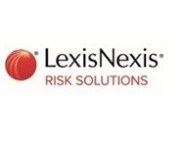Digital footprints can help in the hunt for ghost brokers

James Burton, senior director of insurance product management for U.K. and Ireland, LexisNexis Risk Solutions
Insurance application fraud leading to ghost broking and staged claims is not just a major challenge for the motor insurance sector, it’s a big societal issue. While the recently published fraud data from the ABI showed a decline in the overall number of fraud cases, the update made clear that ghost broking remains a significant part of the fraud landscape with one man convicted of pocketing nearly £18,000 by selling over 40 bogus motor insurance policies .
Hot on the heels of the ABI’s fraud update was news of the jailing an individual from Cambridge for offering fraudulent insurance broking services to Polish nationals living in the UK . It was interesting to note that after detailed analysis, a series of apparently unrelated reports to Action Fraud became connected through common telephone numbers, email addresses and bank account details.
Many insurance fraud prevention tools analyse standard transaction data such as name or address, which can be easy for fraudsters to trick, reverse-engineer, evolve and work around. But fraudsters use email addresses in ways which fall into patterns that are identifiable.
With over 90% of people having the same email address for three years or more and 51% for more than ten years, it makes perfect sense to use email as a front-end fraud protection layer. This isn’t a far-fetched idea, it’s already an approach working effectively to reduce fraud in the banking sector, and now U.K. insurance providers are starting to use this intelligence in earnest to help detect fraud at quote and during the customer on-boarding process.
Email addresses are one of the most common components of an online transaction. Despite the growth and prominence of mobile messengers and chat apps, e-mail is still an integral part of daily online life. In 2020, the number of global e-mail users amounted to four billion and is set to grow to 4.6 billion users in 2025, according to Statista .
This all contributes to making an email address a unique and consistent global identifier. As each individual email address creates a digital footprint there is the potential for it to be one of the most powerful tools for detecting application fraud. Every time an email address is used, it leaves a trace. Over time, those traces unveil patterns of behaviour. The story it creates can be examined to assess the risk of fraud presented at quote.
Most importantly, using email address intelligence during the quote process through a fraud risk score such as LexisNexis® Emailage® Rapid, creates less customer friction than other methods (such as a post-sale review) in determining whether a transaction is a fraudulent attempt or legitimate customer. This overcomes the constant dilemma of how to improve fraud detection at the front end without impacting the seamless quote experience customers rightly expect.
Based on billions of transactions from global payment processors and other online industries, including 82,200 fraud events shared on average daily , LexisNexis® Emailage® Rapid provides an instant risk score for 96% of email addresses worldwide . This can be done as a seamless part of the risk assessment process to automatically validate quotes.
The score can indicate a genuine identity, whether it has previously been linked to fraud or whether it could be a fraudulent ID created to either procure insurance with the sole intent of making a fraudulent claim, or to sell insurance on as a ghost broker. It can also indicate whether the email address and domain exist, when the email address was first seen, or whether the email address bears a close resemblance to the proposer’s name for the policy.
The score can also be used to inform pricing and underwriting decisions alongside a range of data enrichment datasets including publicly available data, policy history data, property, environmental and prior claims data from the single access point provided by the LexisNexis® Informed Quotes platform.
Email intelligence provides an additional layer of defence in fraud prevention strategies to help insurance providers protect unwitting victims and road users from the scourge of ghost brokers as well as those intent on staging accidents in pursuit of fraudulent claims.
About LexisNexis
At LexisNexis Risk Solutions, we believe in the power of data and advanced analytics for better risk management.
With over 40 years of expertise, we are the trusted data analytics provider for organisations seeking actionable insights to manage risks and improve results while upholding the highest standards for security and privacy.
We enable insurers and brokers to improve decision-making, increase profitability and transform business performance with actionable insights from our data and analytics solutions. For more information, please contact risk.lexisnexis.co.uk/insurance or enquiries-info@lexisnexis.co.uk.

